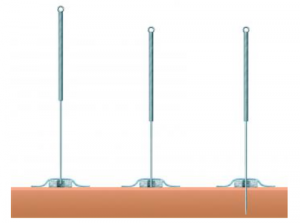
Streitberger Placebo Acupuncture Needle
Quick Navigation
Acupuncture has been used for thousands of years as a natural therapy to treat various health conditions. However, when it comes to scientific research, acupuncture studies often face criticism for being of low quality. This perception stems from several challenges that make it difficult to conduct rigorous, high-quality research. In this blog, we’ll explore the key reasons behind these challenges and what’s being done to improve acupuncture research.
Key Challenges in Acupuncture Research
1. Methodological Challenges
Acupuncture research often struggles with methodological issues due to the unique nature of the treatment. For example:
- Placebo Controls: Creating a convincing placebo for acupuncture (like the Streitberger placebo needle) is challenging because patients can often tell if they’re receiving real acupuncture.
- Blinding: It’s difficult to blind both participants and practitioners in acupuncture studies, which can introduce bias.
- Double-Blind Studies: Designing double-blind studies (where neither the patient nor the practitioner knows who’s receiving real treatment) is nearly impossible in acupuncture research.
These factors make it hard to conduct randomised controlled trials (RCTs) that meet the highest standards of research design.
2. Blinding Difficulties
Blinding, or masking, is a critical part of high-quality research. However, in acupuncture studies:
- Sham Acupuncture: Sham treatments (like non-insertive needles) may not fully mimic the experience of real acupuncture, making it easier for participants to guess which group they’re in.
- Practitioner Bias: Acupuncturists may unintentionally influence the study results if they know which patients are receiving real treatment.
This lack of effective blinding can compromise the validity of study results.
3. Heterogeneity of Acupuncture Treatments
Acupuncture is a highly individualised therapy, which creates challenges for standardisation:
- Different Techniques: Practitioners may use different needling techniques, point selections, and treatment protocols.
- Variable Outcomes: This variability makes it difficult to compare results across studies, leading to inconsistent findings.
Without standardised protocols, it’s hard to draw definitive conclusions about acupuncture’s effectiveness.
4. Limited Funding and Resources
Acupuncture research often receives less funding compared to conventional medical research. This can lead to:
- Small Sample Sizes: Limited funding often means smaller studies, which reduce the statistical power of the results.
- Shorter Study Durations: Insufficient resources may prevent long-term studies, limiting the ability to assess lasting effects.
- Limited Access to Advanced Methodologies: High-quality research often requires expensive tools and technologies, which may be out of reach for acupuncture studies.
5. Publication Bias
Publication bias is a significant issue in acupuncture research:
- Positive Results: Studies showing positive or significant results are more likely to be published.
- Negative Results: Studies with negative or inconclusive findings often go unpublished, skewing the overall body of evidence.
This bias can create an overestimation of acupuncture’s effectiveness and limit the availability of balanced data.
6. Language Barriers
Many acupuncture studies are published in non-English languages, which can limit their accessibility:
- Exclusion from Reviews: Non-English studies are often excluded from systematic reviews and meta-analyses, reducing the diversity and quality of the evidence.
- Limited Global Impact: Valuable research may not reach the wider scientific community, hindering progress in the field.
Efforts to Improve Acupuncture Research
Despite these challenges, the acupuncture research community is working to improve the quality of studies. Some initiatives include:
- Standardized Protocols: Developing consistent treatment protocols to reduce variability across studies.
- Rigorous Study Designs: Implementing more robust methodologies, such as larger sample sizes and longer study durations.
- Multi-Center Trials: Conducting large-scale, multi-centre trials to gather more comprehensive data.
These efforts aim to strengthen the evidence base for acupuncture and enhance its credibility in the scientific community.
Conclusion
While acupuncture research faces several challenges—such as methodological issues, blinding difficulties, and limited funding—efforts are underway to improve the quality of studies. By addressing these barriers, researchers can provide stronger evidence for acupuncture’s effectiveness and ensure it’s recognised as a valuable treatment option.
